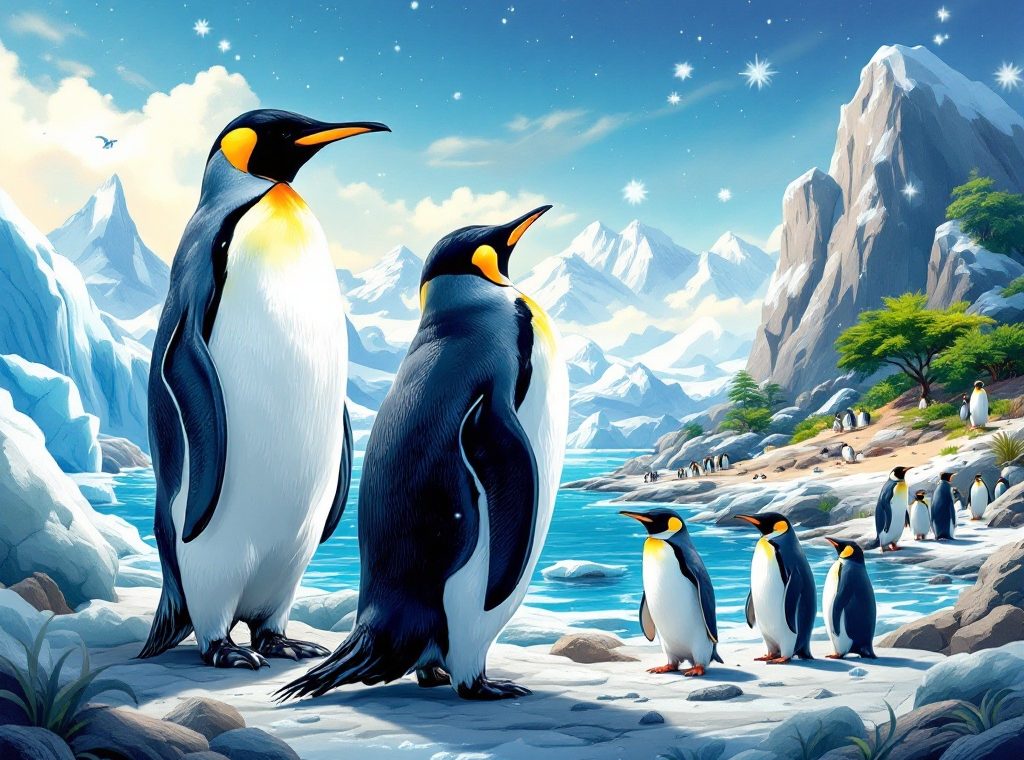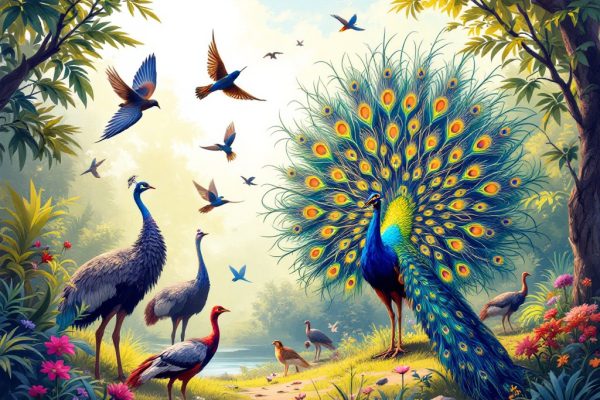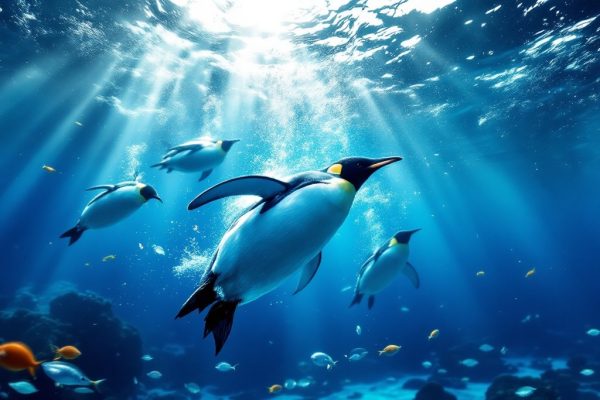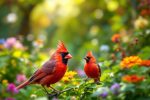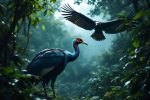What Are the Different Types of Penguins
Dive into the fascinating world of penguins! From the majestic Emperor penguin of Antarctica to the unique Galápagos penguin living north of the equator, discover the incredible diversity of these 18 remarkable species. Learn about their unique characteristics, habitats, breeding behaviors, and hunting techniques. Explore the lives of these captivating creatures and uncover why they are so perfectly adapted to their varied environments. Start your penguin adventure now!
Important information
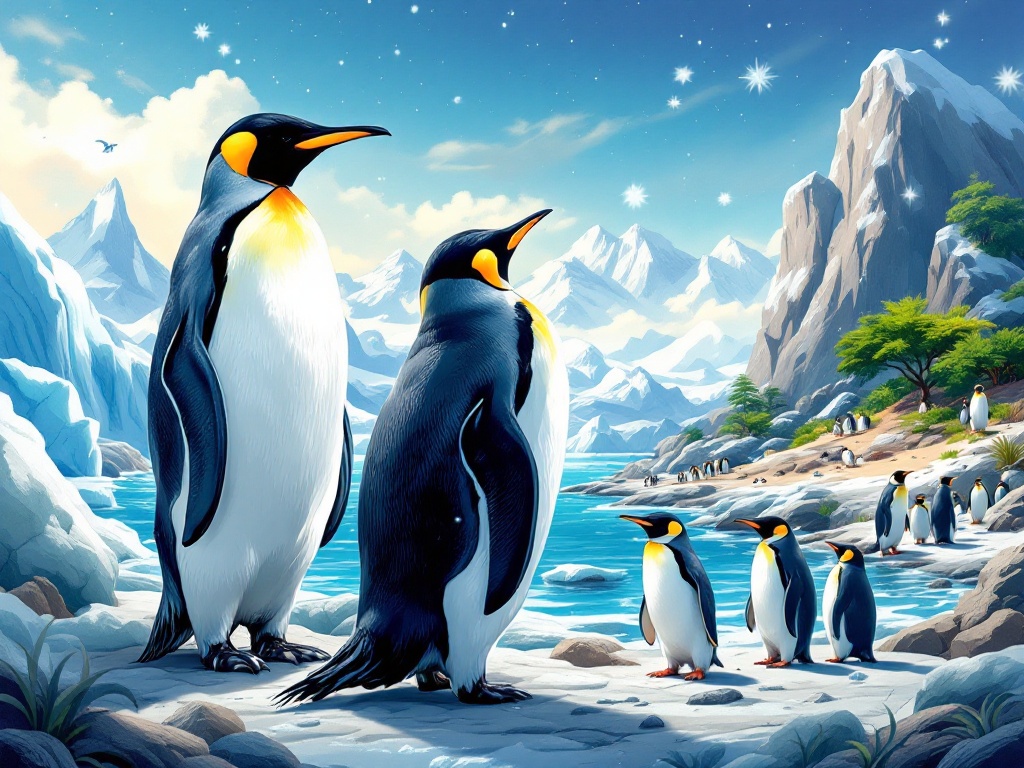
- Eighteen penguin species exist, mostly in the Southern Hemisphere, showcasing a wide range of habitats from Antarctica to warmer regions like the Galapagos Islands.
- Penguins vary greatly in size, from the large Emperor penguin (up to 4 feet tall) to the small Little Blue penguin (about 1.5 feet tall).
- They have diverse breeding strategies. Emperor penguin males incubate the egg while females hunt, while other species like Adélie penguins share duties.
- Penguins’ diets consist of krill, squid, and fish. Hunting techniques vary by species, with some deep diving and others foraging near the surface.
- Many penguin species are distinguished by unique markings such as the Emperor’s yellow and orange markings or the Chinstrap’s black chin-strap.
Types of Penguins
Eighteen recognized penguin species inhabit our planet, primarily in the Southern Hemisphere. These fascinating birds exhibit remarkable adaptability, with some species thriving in cold climates while others, like the Galápagos penguin, inhabit warmer regions near the equator. African penguins, for instance, can be found along the coasts of South Africa and Namibia.
Iconic Species:
- emperor,
- king.
Other Notable Species:
- Adélie,
- Chinstrap,
- Gentoo,
- Macaroni,
- Royal,
- northern rockhopper,
- southern rockhopper,
- Erect-crested,
- Fiordland,
- Yellow-eyed,
- Little Blue,
- White-flippered,
- Little (including Cook Strait, North Island, and Chatham Island subspecies),
- Magellanic,
- Humboldt.
Emperor Penguin
Emperor penguins are distinguished by their impressive stature, reigning supreme as the largest penguin species. Their striking yellow and orange markings make them instantly identifiable. These resilient birds thrive in the unforgiving Antarctic, nesting almost exclusively on the vital sea ice that ensures their survival.
King Penguin
King penguins reside on sub-Antarctic islands such as the Falklands, South Georgia, and Macquarie Island. These majestic birds are the second largest penguin species, smaller only than the emperor penguin. Their distinctive appearance includes brilliant orange markings on their cheeks, necks, and chests.
Adélie Penguin
Adélie penguins are fierce hunters that roam Antarctica’s icy landscapes. Their distinctive white eye rings make them easily identifiable. They primarily feed on krill and small fish. These penguins gather in massive breeding colonies along the Antarctic coast.
Chinstrap Penguin
Identifying a Chinstrap penguin is simple: look for the characteristic thin black band beneath its chin. These medium-sized birds thrive in Antarctica, representing its most populous penguin species, with an estimated 13 million individuals.
Gentoo Penguins
Gentoo penguins, currently classified as a single species, may soon be reclassified into several subspecies. Known for their remarkable swimming abilities, these penguins are easily spotted by their bright orange beaks and impressive agility in the water.
Macaroni Penguin
Macaroni penguins are the most common penguin species, boasting a global population of about 24 million. Their distinctive yellow crest feathers make them easily identifiable on the various sub-Antarctic islands they inhabit.
Royal Penguin
Macquarie Island, a sub-Antarctic sanctuary, is home to royal penguins, distinguished by their striking white faces.
Southern Rockhopper Penguin
Southern rockhopper penguins (Eudyptes chrysocome) are instantly recognizable by their distinctive yellow plumes and raspy call. These charismatic birds breed on subantarctic islands scattered across the southern Atlantic and Indian Oceans, with the Falkland Islands being a prime example.
Northern Rockhopper Penguin
Northern rockhopper penguins inhabit the isolated islands of Tristan da Cunha and Gough in the South Atlantic. These islands are naturally uninhabited by humans. Sporting distinctive yellow crests, these agile penguins navigate the challenging, rocky terrain by hopping with remarkable ease.
Erect-crested Penguin
Erect-crested penguins, known for their upright crests, are exceptional long-distance swimmers. These impressive birds journey between South America and Antarctica to hunt, demonstrating remarkable endurance.
Fiordland Penguin
Fiordland penguins uniquely inhabit the rainforests of New Zealand’s South Island. No other penguin species calls this temperate, forested environment home.
Yellow-eyed Penguin
The critically endangered Yellow-eyed Penguin, or Hoiho, is found only in New Zealand. This unique and precious species has fewer than 3,400 individuals remaining. Their distinctive yellow eyes make them easily recognizable.
Little Blue Penguin
The little blue penguin, also known as the fairy penguin, holds the title of the world’s smallest penguin. Native to southern Australia and New Zealand, these delightful birds are easily identified by their diminutive stature and striking blue plumage. They are truly a remarkable species.
White-flippered Penguin
Instantly recognizable by their striking white flippers, these nocturnal penguins are unique. As a subspecies of the little penguin, they are the only penguins active at night, a truly special distinction.
Cook Strait Little Penguin
Little penguins residing in the Cook Strait are a unique subspecies found on the southern end of New Zealand’s North Island. Remarkably adaptable, these small birds thrive even in urban environments, a rare trait among penguins.
North Island Little Penguin
A subspecies of the little penguin resides on New Zealand’s North Island, specifically its northern tip. These penguins inhabit unique habitats and exhibit distinct behaviors.
Chatham Island Little Penguin
Unique to Chatham Island, these little penguins breed nowhere else, making their small range a critical vulnerability. Their survival hinges on the protection of this single location.
African Penguin
African penguins are unique, being the only penguin species inhabiting Africa. These captivating birds reside primarily along the South African and Namibian coasts. Their distinctive, braying call has earned them the nickname “Jackass penguin.” Sadly, this remarkable species is currently endangered.
Magellanic Penguin
Magellanic penguins, easily identified by the single black band across their necks, primarily inhabit the southern coasts of South America, including Chile and Argentina. For nesting, they frequently dig burrows and maintain complex social structures within their colonies, exhibiting fascinating communication and interaction.
Humboldt Penguin
Humboldt penguins, instantly recognizable by their distinctive black faces and white neck rings, primarily inhabit the Pacific coasts of Chile and Peru. Researchers have observed some fascinating behaviors in these birds.
Galápagos Penguin
Galápagos penguins are unique, being the only penguin species found north of the equator. Living on the Galápagos Islands, they’ve adapted to the warm climate, a stark contrast to the icy habitats of their relatives. This remarkable adaptation allows them to thrive in the heat.
Characteristics of Penguin Species
From the majestic emperor penguin, standing nearly four feet tall and weighing up to 90 pounds, to the diminutive little blue penguin, a mere 1.5 feet and two pounds, these fascinating birds exhibit remarkable diversity. Despite their size differences, most penguins share streamlined bodies, flippers for efficient swimming, and contrasting black and white plumage that provides excellent camouflage in their environment. Some species boast unique markings, like the vibrant orange and yellow head patterns of the king penguin or the distinctive white stripe adorning the gentoo’s head.
While penguins primarily inhabit the Southern Hemisphere, their habitats vary considerably. Many thrive in frigid regions, yet others reside in temperate climates, with some even calling the Galapagos Islands home. Breeding behaviors also differ widely. Emperor penguin males famously incubate the single egg while the females forage for food, whereas Adélie penguins construct nests and share incubation responsibilities. As carnivores, all penguins primarily consume fish, squid, and krill. Larger species, such as emperor and king penguins, undertake deep dives to pursue larger prey, while smaller penguins, like the little blue, feed closer to the surface. Ultimately, a penguin’s diet depends on its species and the local food supply.
Size and Physical Traits
Penguins exhibit a striking diversity in size, ranging from the impressive Emperor penguin, standing at four feet tall and weighing up to 90 pounds, to the tiny Little Blue penguin, measuring a mere 1.5 feet and weighing only two pounds.
Their streamlined bodies and powerful flippers are perfectly adapted for aquatic life, enabling them to navigate the ocean depths with remarkable efficiency. Their distinctive black and white plumage serves as effective camouflage, blending seamlessly with the surrounding water and ice.
While this basic color pattern is common to all penguin species, some boast unique markings that set them apart. The King penguin, for example, displays vibrant orange and yellow head feathers, while the Gentoo penguin is distinguished by a striking white stripe across its head.
These specialized adaptations are essential for survival in their diverse habitats, allowing them to thrive in various environments.
Habitat and Distribution
Penguins flourish across the Southern Hemisphere, making their homes in a variety of environments, including Antarctica, temperate rainforests, and islands. For example, emperor penguins endure the harsh conditions of the Antarctic ice sheet, while king penguins opt for the sub-Antarctic islands. Magellanic penguins, conversely, settle along the South American coasts. Their choice of habitat is determined by the availability of food and appropriate breeding areas.
Breeding and Colony Behavior
Penguins display fascinating breeding behaviors that differ significantly among species. Emperor penguins, known for their extraordinary parental care, breed in large colonies during the harsh Antarctic winter. King penguins, also colonial nesters, have a distinct breeding pattern. These large social groups offer key benefits, including protection from predators and easier mate selection. A penguin species’ colony size and behavior are influenced by environmental factors and its unique evolutionary path.
Diet and Hunting Techniques
Penguins primarily feed on krill, squid, and fish, but their hunting methods differ. Adélie penguins are pursuit divers, actively chasing their prey. Emperor and king penguins also pursue underwater prey, often diving to remarkable depths. Gentoo penguins prefer shallow dives, focusing on food near the shore. Chinstrap and macaroni penguins use specialized foraging techniques adapted to their specific environments.

